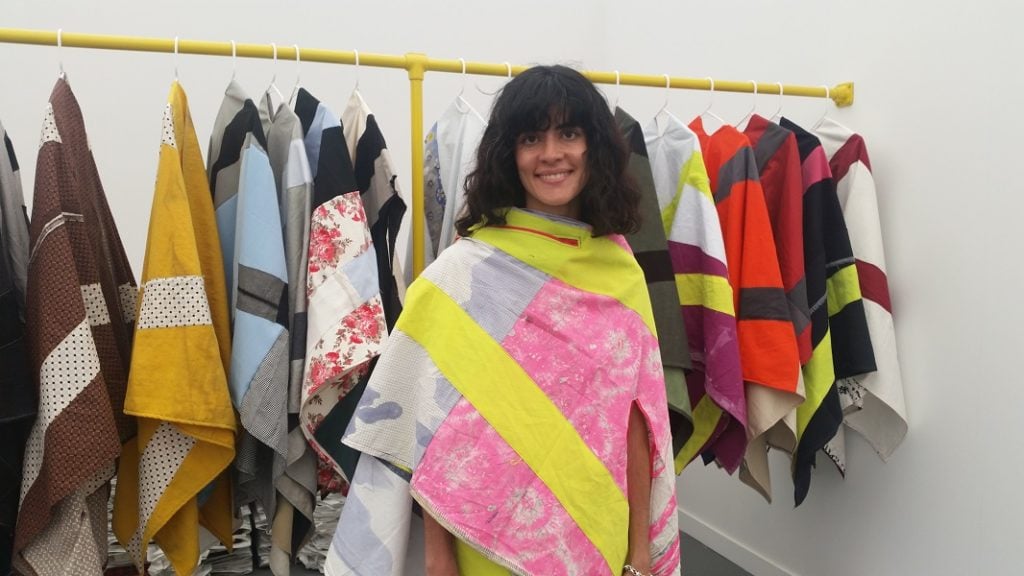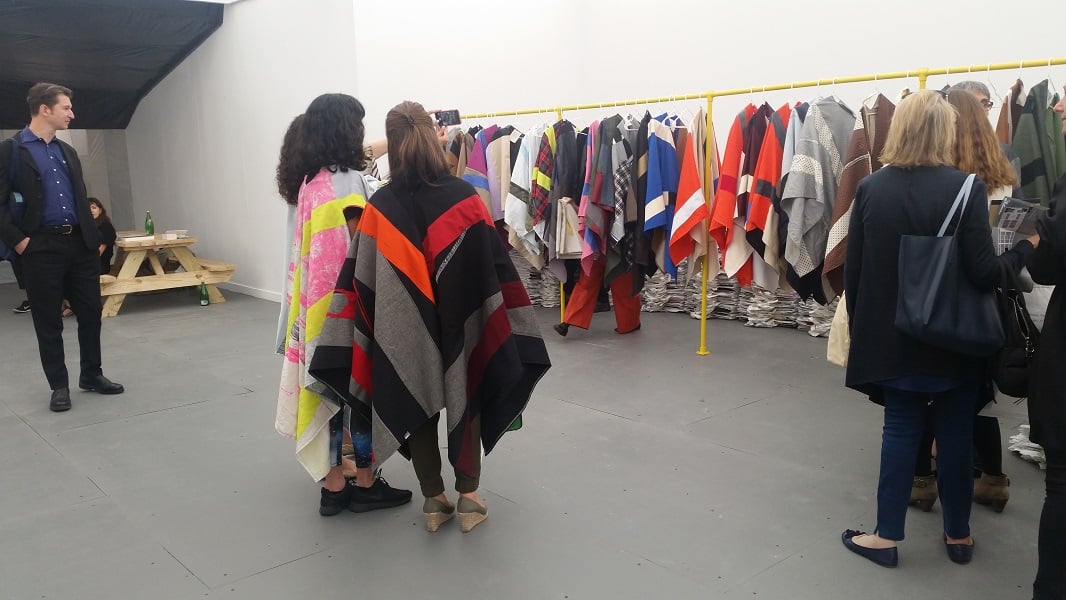Art Fairs
Frieze VIPs Go Wild For Pia Camil’s Free Ponchos


Cait Munro

At the Frieze New York preview, patrons are gaga for Mexican artist Pia Camil’s ponchos, which hang on utilitarian yellow racks in the Projects section. Billed as “habitable paintings”—in the vein of Oscar Murillo’s recent floor paintings (see Oscar Murillo Painting Goes Missing From MoMA—Was it Theft?)—the project is meant to function as a personal, portable environment. They also serve, of course, as a status symbol, as fairgoers are invited to keep one of the 800 highly-coveted ponchos on a first come, first served basis. Needless to say, there has been a frenzy surrounding the gratis garments.
“They are all incredibly unique, since they have been made with fabric leftovers or remnants,” Camil told Phaidon. “The fact that it is free is unexpected and makes it even more desirable…”

Photo: Kate Shanley
Camil was inspired by Brazilian artist Hélio Oiticica, whose famous Parangolé series from the late ’60s involve layers of fabric, plastic, and matting, and are intended to be simultaneously worn as elaborate costumes and experienced as mobile sculptures.
“Camil’s textiles require direct participation, quietly emphasizing the characteristic experience of the art fair, where the act of looking at art is as important as the act of looking at others and distinguishing oneself from them,” the wall label reads. (Eric Fischl, known for his paintings of well-heeled fair-goers socializing, would have a field day with this text.)
We have to ask—how are we ever supposed to distinguish ourselves if we’re all cloaked in similar ponchos?
(For more Frieze Week coverage, see Collective Design Fair Has Crocheted Chairs, and a Nap Lab, 6 Must-See Gallery Shows This Frieze Week, Victoria Siddall’s Guide to Frieze New York and What Not to Miss, and All the Frieze Week Happenings You Need to Know.)

Photo: Kate Shanley